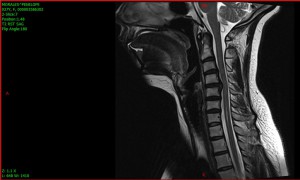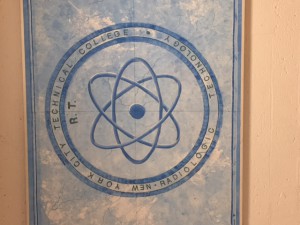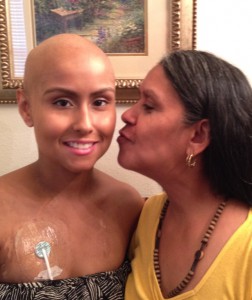“In recent years, the increasing complexity of radiologic procedures and the continuing emphasis upon the elevation of prescribed standards of practice set forth by the Bureau of Environmental Radiation Protection of New York State have made radiologic technology and medical imaging a highly specialized and sophisticated science requiring competently trained personnel” (City Tech). My name is Penelope Morales and I am a Radiologic Technology and Medical Imaging major student at City Tech. I am pursing an Associate in Applied Science (AAS) degree in Radiologic Technology. The career I am looking to acquire after obtaining my AAS is as a radiologic technologist. I know this is the best career path for me because I am fascinated with how diagnostic imaging works; I have a desire to work in the medical field, and best of all, this career can lead to an array of specialty areas of practice to advance my career. In this essay, I will inform you on what radiologic technology and medical imaging is, what being a radiologic technologist entails and how my education at City Tech will get me there.
In this major, I will learn how to “be skilled in the academic and clinical components of radiologic technology, communicate effectively in a heath care setting and will formulate technique factors and demonstrate skills in critical thinking and problem- solving as required of a radiologic technologist” (City Tech). Upon graduation, my career options will range from being employed in hospitals to urgent care facilities as a radiologic technologist. I will also be “eligible to take the American Registry of Radiologic Technologists (ARRT) examination for certification and New York State Licensure” (City Tech). I specifically want to use the education I receive at City Tech as a stepping-stone for a BS in this major or certification in a particular specialty.

This picture shows disc herniation causing spinal cord compression on my cervical spine. On the third disc down you can see protrusion.
Radiologic technology and medical imaging is a range of diagnostic imaging techniques, which includes X-rays, computed tomography (CT) scans, magnetic resonance imaging (MRI) and sonography. These techniques take pictures, which helps locate an injury or illness, and confirms that the diagnosis is correct. With the exception of sonography, radiation is used to capture these images. Radiologic technology is a mix of art and science, which fascinates me. The visuals produced from diagnostic imaging tell a story. The story behind these images can save or destroy a person’s life. For example, diagnostic imaging can see where a coin is located in a child’s nose or locate a tumor a patient knew nothing about.
Being a cancer survivor has given me a newfound purpose in life and a part of that is my desire to work in the medical field. I know this is the right career path for me because I have the empathy this job requires. I have been in a similar health situation and can personally relate with patients I will encounter with day to day. The impact my medical care team had on me during my treatment left an imprint on my heart. They have inspired my passion for involvement in the patient and health care field. Having this medical platform will allow me to help, encourage and support individuals that are trying to find reasons behind their illness and sickness. With my newfound purpose, I appreciate and believe my time I have left on this earth is valuable. This career offers flexibility in its scheduling, from working part time or weekends, giving me more time to spend with friends and family.
Radiologic technologist, also known as X ray technologist, uses x-ray equipment to produce 2-D and 3-D images of inside the body. Radiologic technologists work very closely with patients. They explain what type of imaging is about to take place and answer any questions the patient may have. Then, the radiologic technologist positions the patient to create the best quality images as possible. To ensure the patient’s safety from radiation, the technologist provides a lead apron to the areas of the body not needed for the X-ray. “Once the imaging equipment is set up and turned on, the X-rays pass through the patient’s body to X-ray film underneath, creating an image the technologist then develops” (Wilson, par. 4). The images are then sent to the doctor (a radiologist) who reads the X-ray and provides a correct diagnosis. Beyond broken bones, X-rays also can take images of other parts of the body such as the abdomen and lungs. Aside from a radiologist technologist, there are other positions that contribute to this field and depending on specialty, are in high demand.
Starting a career as a radiologic technologist is just the beginning to an endless pool of opportunities. “Increases in medical technology have created many specialties in the radiological field” (Wilson par. 8). With further education, a radiologic technologist can advance their career in specialties such as sonography, CT and MRI. Sonography, or ultrasound, uses sound waves to create images. CT and MRI technology “are similar to those of radiologic technology except that they rely more on computers that work in conjunction with imaging equipment” (Wilson par. 12). There are also a number of post- primary specialties that are not limited to, but include mammography, bone densitometry and cardiovascular technology. With these vast specialized areas comes many benefits such as monetary, knowledge and professional gain. Technologists with more than one post primary specialty are highly desirable within the health care industry. If I were to pick a specialty, my interest would be in sonography. As a sonographer, I would focus on cardiovascular technology as a post secondary specialty. With this specialty I would like to perform echocardiograms, which are sonograms of the heart. Continuing my education at City Tech will bring me a step closer to having the career I desire.

City Tech’s Radiologic Technology Department’s trefoil image. This image is the symbol for radiation.
“City Tech’s comprehensive program provides students with the special knowledge and skills required for the practice of radiologic technology and medical imaging” (City Tech). My education at City Tech will prepare me to enter the field of radiologic technology as a qualified healthcare professional. Academic courses include but are not limited to human anatomy, radiographic physics and radiation safety. I will also learn how to use diagnostic imaging equipment to acquire images. Aside from the academics, I will receive hands- on clinical training at an off- site health care facility. This experience will allow me to practice my technical skills and communication with patients. It will also give me the opportunity to work with other heath care team members.
Seeing what is required of a radiologic technologist, are you interested? If so, having an interest in math and science is a plus and you have to stay focused. You will have to complete a set of pre-requisites before applying for the program. This program is very competitive and has limited seats. “Due to the high number of applicants to the clinical phase of the program in the past two years, the average GPA, for acceptance to the program has been approximately 3.5 or higher” (City Tech). My advice would be to concentrate on your pre- requisites. Aim high and do not allow yourself to get a grade lower than a B. Remember why you chose this career. Whether you have a passion for helping people or are interested in professional growth within the radiologic field, your limitations in this major are based on your own abilities and interests. The array of radiologic technology to learn keeps this field exciting and new. The possibilities are endless.
Works Cited
New York City College of Technology (City Tech). “Radiologic Technology and Medical Imaging.” New York City College of Technology College Catalog 2014-2015. Web. 26 March 2015.
Wilson, Landice. “Examine a career in diagnostic imaging.” Career World. Apr/May98, Vol. 26 Issue 7, p21.3p. Academic Search Complete. Web. 1 April 2015.



